Chapter: Ophthalmology: Conjunctiva
Conjunctiva Tumors
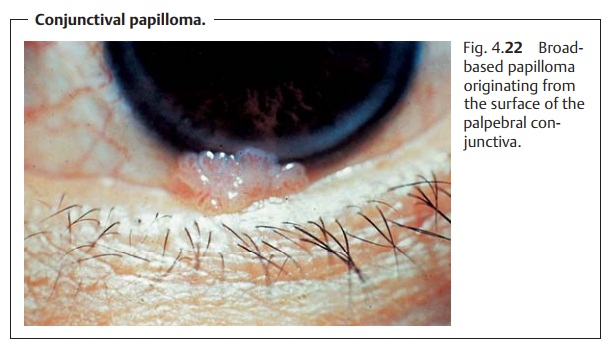
Tumors
Primary benign conjunctival tumors (nevi,
dermoids, lymphangiomas, hemangiomas, lipomas, and fibromas) occur frequently, as do tumor-like
inflammatory changes (viral papillomas, granulomas such as suture granulomas
after surgery to correct strabismus, cysts, and lymphoid hyper-plasia). Malignant conjunctival tumors (carcinomas in situ,
carcinomas, Kaposi’s sarcomas, lymphomas, and primary acquired melanosis) are rare. Benign lesions may become
malignant; for example, a
nevus or acquiredmelanosis may develop into a malignant melanoma. This section
presents only the most important tumors.
Epibulbar Dermoid
Epibulbar dermoid is a round dome-shaped
grayish yellow or whitish con-genital tumor.
It is generally located on the limbus of the cornea, extendinginto the corneal
stroma to a varying depth. Epibulbar dermoids can occur as isolated lesions or as a
symptom of oculoauriculovertebral dysplasia (Golden-har’s syndrome).
Additional symptoms of that disorder include outer ear deformities and
preauricular appendages (Figs. 4.19a and b). Dermoids can contain hair and minor skin appendages.
Ophthalmologists are often asked to remove them for cosmetic reasons. Surgical
excision should remain strictly superficial; complete excision may risk
perforating the globe as dermoids often extend through the entire wall of the
eyeball.
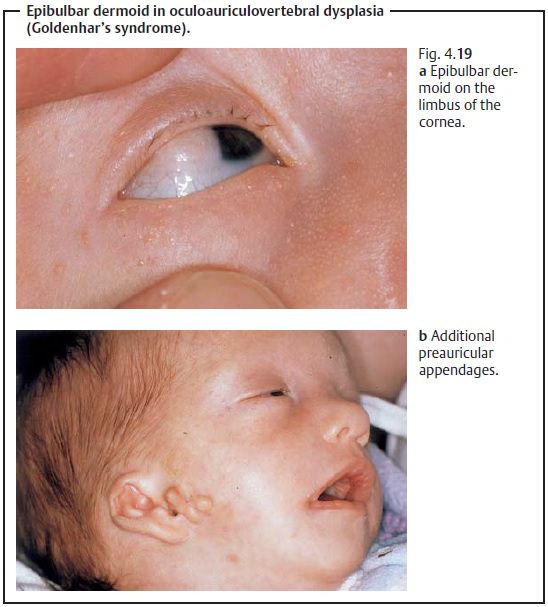
Conjunctival Hemangioma
Conjunctival hemangiomas are small, cavernous proliferations of blood ves-sels. They are congenital anomalies and usually resolve spontaneously by the age of seven. Where this is not the case, they can be surgically removed (Fig. 4.20).
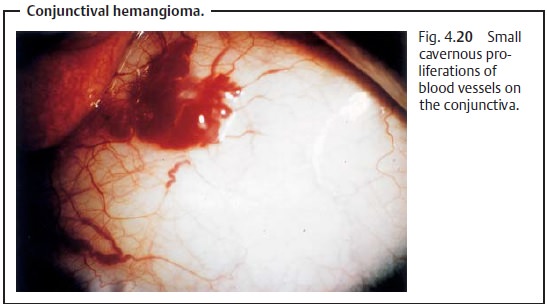
Epithelial Conjunctival Tumors
Conjunctival Cysts
Conjunctival cysts are harmless and benign. Occurrence is most often post-operative (for
example after surgery to correct strabismus), post-traumatic, or spontaneous.
They usually take the form of small clear fluid-filled inclu-sions of
conjunctival epithelium whose goblet cells secrete into the cyst and not on to
the surface (Fig. 4.21). Cysts can lead to a foreign-body sensation and are removed
surgically by marsupialization (removal of the upper half of the cyst).
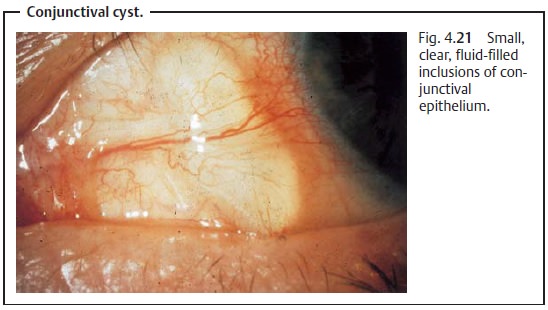
Conjunctival Papilloma
Papillomas are of viral origin (human
papillomavirus) and may develop from the bulbar or palpebral conjunctiva. They
are benign and do not turn malig-nant.
As in the skin, conjunctival papillomas can occur as branching pediculate tumors or as broad-based lesions on the surface of the conjunctiva (Fig. 4.22). Papillomas produce a permanent foreign-body sensation that is
annoying to the patient, and the entire lesion should be surgically removed.
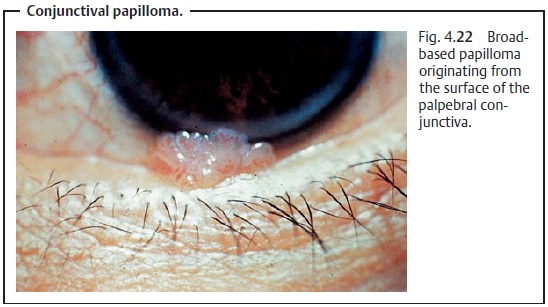
Conjunctival Carcinoma
Conjunctival carcinomas are usually whitish, raised, thickened areas of epithelial tissue whose surface forms a plateau. These lesions are usually ker-atinizing squamous cell carcinomas that develop from epithelial dysplasia (precancer) and progress to a carcinoma in situ (Fig. 4.23). Conjunctival carci-nomas must be excised and a cytologic diagnosis obtained, and the patient must undergo postoperative radiation therapy to prevent growth deep into the orbit.
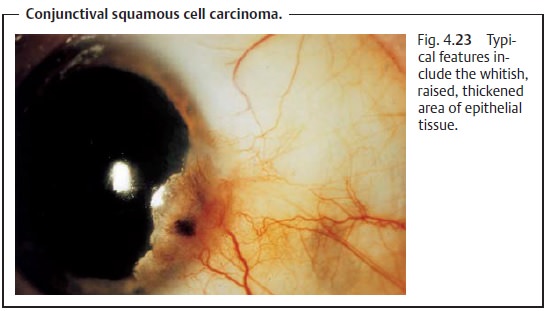
Related Topics